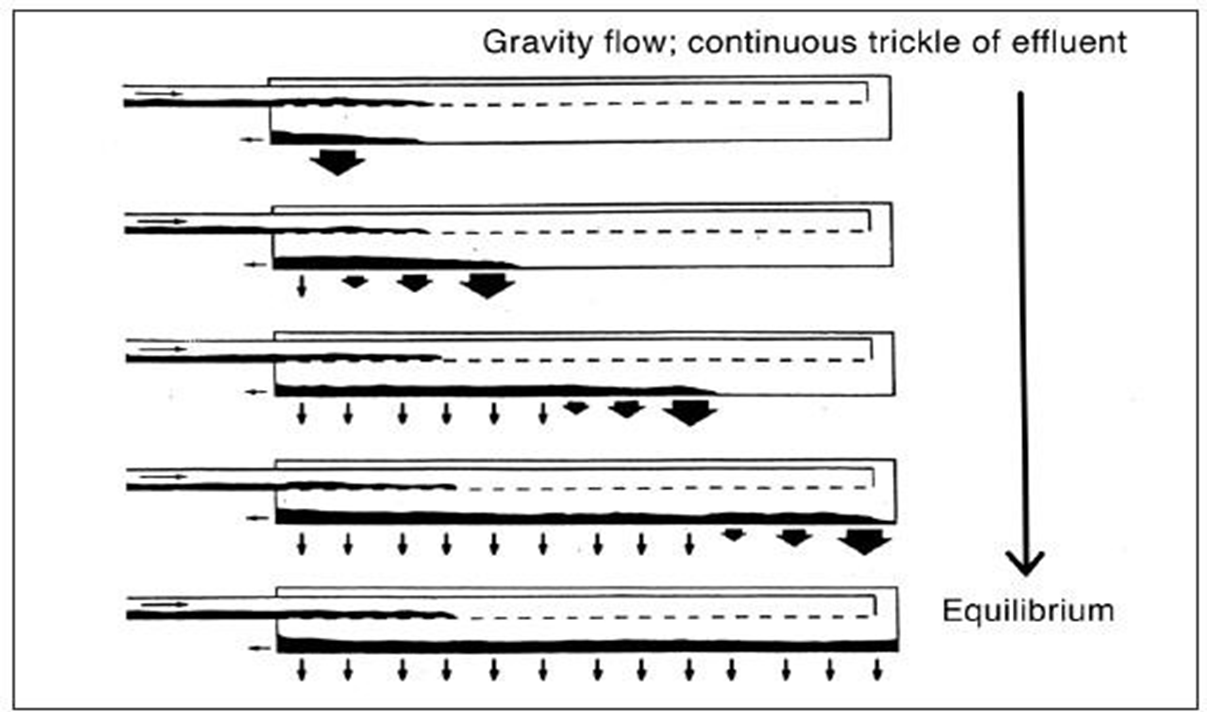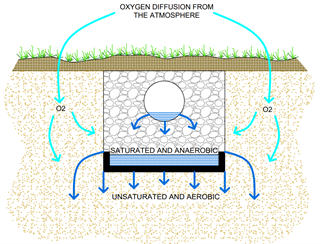The Truth About Biomat
Posted on
Biomat has often been referred to as a “progressive failure” of the drainfield, but it is quite the opposite. Biomat is part of the drainfield’s maturing process and plays a crucial role in its ability to evenly distribute and properly treat effluent.
Distribution:
For gravity-fed septic systems, effluent enters the drainfield and biomat starts to develop. Over time this biomat will grow throughout the length of trench. As it expands the rate at which effluent can infiltrate through the receiving soil layer will decrease. This allows two important processes to happen.
1. Effluent will naturally distribute throughout the length of the trench. As the infiltrative rate decreases, the effluent will progress down the length of the septic system. The diagram below demonstrates how, over time, the biomat develops to create a layer of low permeability that allows effluent to distribute over the length of the trench.

Progressive Clogging of the Infiltrative Surfaces of Subsurface Absorption Systems (Bouma et al. 1972)
2. A saturated zone above the biomat and unsaturated zone below the biomat is created. Over the life of the septic system, effluent levels in the trench will rise and begin to utilize the sidewall area of the trench.

Over time the biomat will reach a state of equilibrium. The amount at which the biomat develops will be matched by the rate at which it decays. Assuming proper system loading and maintenance, the biomat should maintain this equilibrium throughout the lifetime of the septic system.
Treatment:
Effluent from the septic tank contains organics, which the bacteria in the drainfield will use as food to grow and multiply creating the biomat. This helps maintain two distinct regions in the drainfield; a saturated anaerobic layer and an unsaturated aerobic layer. While some treatment of the effluent occurs in the anaerobic layer, most of the treatment is in the unsaturated zone where aerobic bacteria thrive. Once the effluent begins to infiltrate through the unsaturated zone, aerobic bacteria will provide treatment and rid the effluent of harmful pathogens and viruses.
Biomat often has a negative connotation associated with it because it is only ever seen and talked about after a system has been abused, creating an overly restrictive layer which is detrimental to the system. It is important to know that the biomat plays an important role and brings many benefits to both system performance and the protection of public health.
Want to learn more about biomat?
